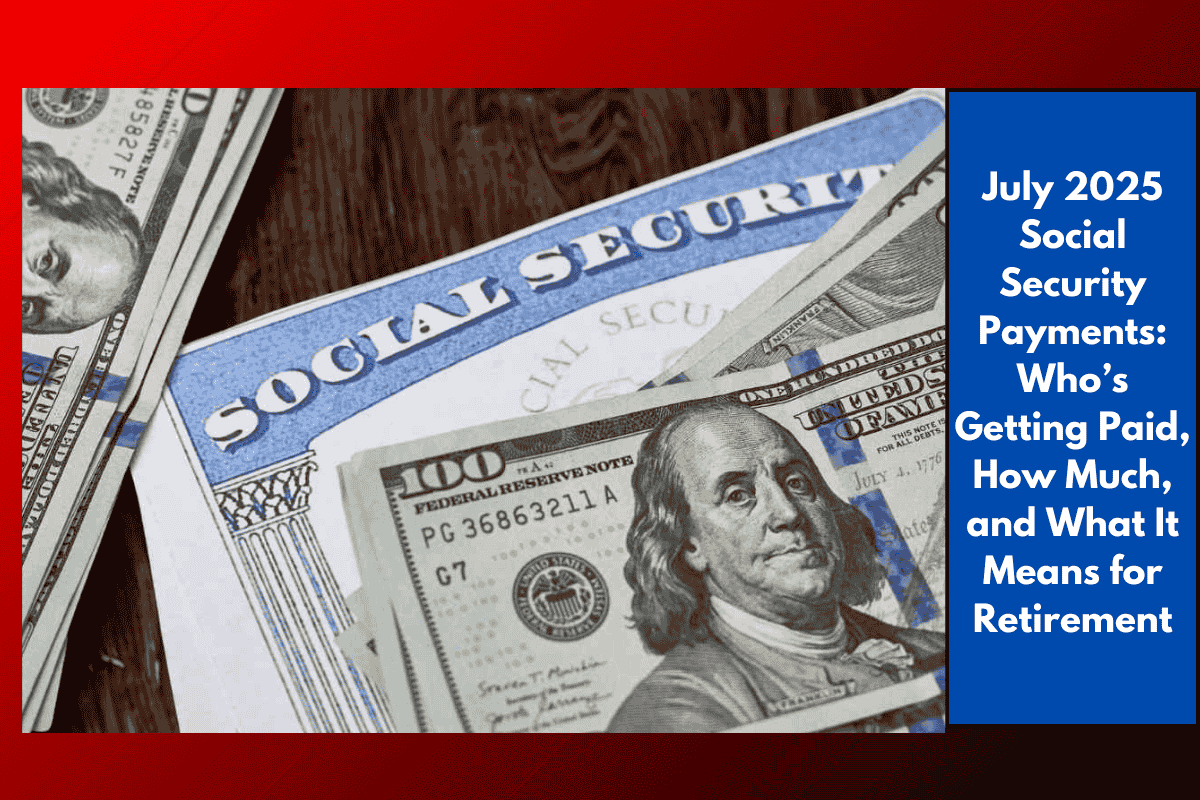If you receive Social Security or SSI, you may have already received your July 2025 payment—or it could be arriving any day now. The Social Security Administration (SSA) follows a set schedule based on your birth date or your benefit type. Along with the payment timeline, we’ll also break down how much you can get and what it really takes to retire with peace of mind.
Who Got Paid and When in July 2025?
Social Security payments are sent out on Wednesdays, depending on the day of the month you were born:
Born 1st–10th: Payment arrived on July 9
Born 11th–20th: Payment came on July 16
Born 21st–31st: Payment hits accounts today, July 23
If you started getting Social Security before May 1997, your money arrived earlier on July 3. If you only receive Supplemental Security Income (SSI), you were paid on July 1.
Who Gets These Benefits?
Social Security supports a large part of the U.S. population. As of spring 2025, over 73.9 million people are getting Social Security or SSI. That’s around 1 in every 5 adults.
Here’s how it breaks down:
52.6 million are retired workers
7.2 million receive SSDI (Social Security Disability Insurance)
5.8 million are survivors (like spouses and children of deceased beneficiaries)
4.9 million get both Social Security and SSI because of low income
How Much Do People Get?
In May 2025, the average monthly check for a retired worker was $2,002.39. But when you include benefits for family members like spouses and children, the average drops to $1,950.27. This happens because family benefits lower the per-person average.
Maximum Social Security Payment: Up to $5,108
The highest monthly benefit someone can get in 2025 is $5,108. But that only applies if you:
Worked at least 35 years
Earned $176,100 or more each year (the taxable limit for 2025)
Delayed claiming benefits until age 70
If you retire at your full retirement age, the max drops to $4,018. And if you retire early at 62, the cap is only $2,831.
What Boosted Payments in 2025?
Two big changes improved Social Security payments this year:
COLA (Cost-of-Living Adjustment): A 2.5% raise pushed the average monthly payment from $1,927 to $1,976. This helps a bit against inflation, especially rising food and medical costs.
Social Security Fairness Act: Passed in January 2025, this law ended unfair pension penalties for nearly 3 million retired teachers, firefighters, and public workers. Many of them got retroactive payments averaging $6,710 earlier this year.
Is $1 Million Enough to Retire?
People often say you need $1 million to retire. But that depends on where you live, how much you spend, and if you have other income sources.
In a small town in Italy or rural America, that money may last decades. In a big city like New York or Miami with a luxury lifestyle, it might only last 10 years.
Some general tips:
Use the 4% rule: Spend 4% of your savings yearly
Track your current spending and adjust for 3% inflation
Subtract any steady income (like pensions or Social Security)
Save around 25 times your yearly expenses
If you spend $50,000 per year, you should aim to save $1.25 million. But remember: there’s no one-size-fits-all. Your health, dreams, and where you retire will shape your real number.
Social Security payments for July 2025 are nearly complete, with the last round arriving today for those born late in the month. While some people can receive up to $5,108 a month, most get less depending on when they retire and how much they earned. Still, even modest benefits play a big role in retirement planning. Add that to savings and other income sources, and your future can be more secure. Knowing the exact dates, amounts, and how to plan ahead can help you get the most out of your benefits.














